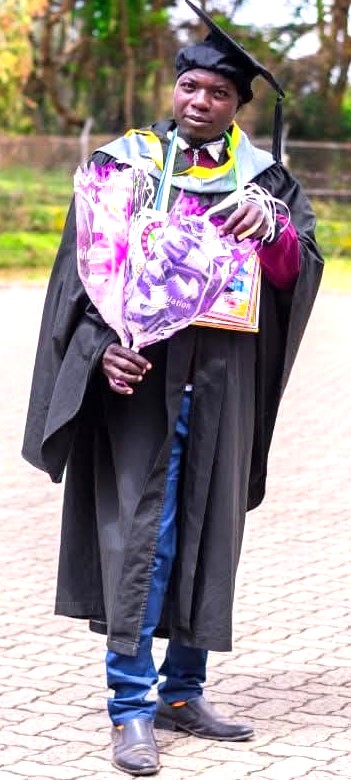How to Memorise Anything by Aditi and Sudhir Singhal is the best book I have read recently on memory tricks and techniques. I can say in this essay, I learnt a lot of insights, which I am ready to share. For sharing is caring. I anchor the oeuvre of this writ on the 3 Rs: Registration is absorbing information. Retention is storing information. Recollection is retrieving information from wells and vaults of memory.
Then, there are also 10 Laws of Remembering recommended by Dr. Paul Bundi Karau in his heroic book titled Journey to Academic Success. They include: Law of interest or fun, law of fitness, law of places, law of senses, law of exaggeration, law of repetition, law of small chunks, law of concentration, law of comprehension and law of previous knowledge.
Dear reader, memory is the process in which we store information in our brains for later retrieval. Building strong memories is important because the great Greek philosopher Plato argued, “All knowledge is but remembrance.” Then, in The Power of the Sub-Conscious Mind, Joseph Murphy argues that in the spheres or duality of mind — sub-conscious mind is the seat of memories. Moreover, in Keys to Success, Napoleon Hill writes about the 6 departments of the mind, which include: ego, emotion, reason, imagination, conscience and memory.
More importantly, in a page-turner titled How to Remember, Dominic O’Brien contends that having a good memory demands that we remain fit like fiddles and sound like bells. We must be prone to sound mind mastery and management. Mind body balance is the sweet secret. Mental health is the be-all and end-all. A well-nourished body is one of the keys to a well-nourished mind. The path to fitness is simple. It is: Taking regular exercise; eating good food; minding the diet; avoiding junk food; shunning drug abuse; and focusing on quality sleep.
Actually, there are three major types of memory: Sensory memory, which works when our senses are experiencing something. Short-term memory (STM) holds doit amount of information typically around 7 items or even less for a short period of time, from 10-15 seconds. Or up to 15 minutes. Long-term memory (LTM) stores information spanning for months and years. We can transfer information from SMT to LTM through Spacing Effect or Distribution Practice Effect.
Additionally, we can classify memory based on in-put or kind of information we want to retain. Types of memory based on in-put include: Auditory memory, remembering what we have heard. Visual memory, remembering what we have seen. Kinesthetic memory, remembering what we have stored in nerves and muscles. Or what is attached to movement and mobility. Likewise, types of memory based on kind of information include: Semantic memory, storing factual knowledge. Episodic memory, capturing episodes and memories of places. Procedural memory, focusing on learned actions, procedures and processes.
READ ALSO:
Teachers who resign or are dismissed to get terminal benefits under new TSC policy
Ideally, memory is not just a function of the brain. It is well-guided by the faculty of the mind — comely creator of things we call thoughts. Greeks and Romans, built strong memories through different forms of art such as: art of imagination; transforming new information into images to retain in mind. Art of association; connecting images of what we already know. Art of location; anchoring associations in our minds in the manner of the old Greek method of “loci”. Art of concentration; focusing fully on information we are experiencing.
Moreover, memories are akin to muscles. We exercise to increase strengths of muscles. We use the same trick to build strong memories. We achieve this through stupendous and tremendous techniques. In the giant list of top tips is repetition or re-reading. Memory masters mention that what is repeated is remembered, and what is remembered is repeated. Repetition is the mother of all memories. It is how we evince excellence. No wonder, the great Greek philosopher Aristotle observed, “We become what we repeatedly do; excellence is not an act but a habit.”
So, it is wrong for students to rely on cramming to attain mystery of mastery and memory in subjects requiring reading and re-reading. For cramming contravenes Spacing Effect or Distribution Practice Effect, which demands that students should study in shorter sessions while creating brief breaks in between in correct congruence with Pomodoro Technique.
Largely, building strong memories abut on attention, concentration, interest and emotions. On tricks and techniques of memory, repetition or re-reading leads the pack. Then, there is revision or re-visiting or frequent reviews of content taught. Likewise, there is mnemonics, derived from the Greek word mnemon, meaning “mindful”, reminding us of the Greek goddess Mnemosyne. The word is also connected to the Greek word mnemonikos, meaning “of memory or relating to memory.” Mnemonic is a device helping us to remember something. Mnemonic devices include: songs, rhymes, jingles, acronyms and acrostics. For instance, students studying History remember Plain Nilotes with acrostic MINTS: Maasai, Iteso, Njeps, Turkana and Samburu.
Consequently, chain method is a quick way of connecting unrelated items like the ones on a random list or any reading material. In peg system just the way a physical hook on a wall can help us to hang something on it, likewise, a mental hook or peg, assists us hold information in the mind. Additionally, number rhyme method represents numbers by images of things they rhyme with. Such as eleven with heaven. In number shape method, we associate an image with each number according to its shape. For example: 1 looks like a candle and 7 looks like an axe.
Furthermore, in self-testing technique, after reading, we find ways of testing ourselves, maybe, through summarisation. Or fielding quality questions to attempt them. In drawing or diagram technique, we draw as we read so as to develop eidetic memory. In method of loci or memory palace or Roman room method, we associate items with specific locations. Journey method is a unique technique assisting us remember information by associating it with a special familiar route or journey.
Finally, super-memory music technique, specifically selected music enhances memory, concentration or learning. In chunking technique, we break information into smaller and manageable “chunks”. For by a yard, it is hard, but inch by inch, everything is a cinch. In colour-cues technique, we use different colours of pens to read through text-marking and text-annotation. In a heroic book titled Multiple Intelligences in the Classroom, Thomas Armstrong recommends idea-sketching technique, involving drawing quick simple visuals to explore, develop or communicate ideas. Then, there are self-mastery rituals such as solitude, silence, mindfulness, meditation and feeling-toned moments.
By Victor Ohieng’
The writer is an educator – academic and career consultant; rolling out academic talks and training services in schools. vochieng.90@gmail.com. 0704420232
You can also follow our social media pages on Twitter: Education News KE and Facebook: Education News Newspaper for timely updates.
>>> Click here to stay up-to-date with trending regional stories
>>> Click here to read more informed opinions on the country’s education landscape






